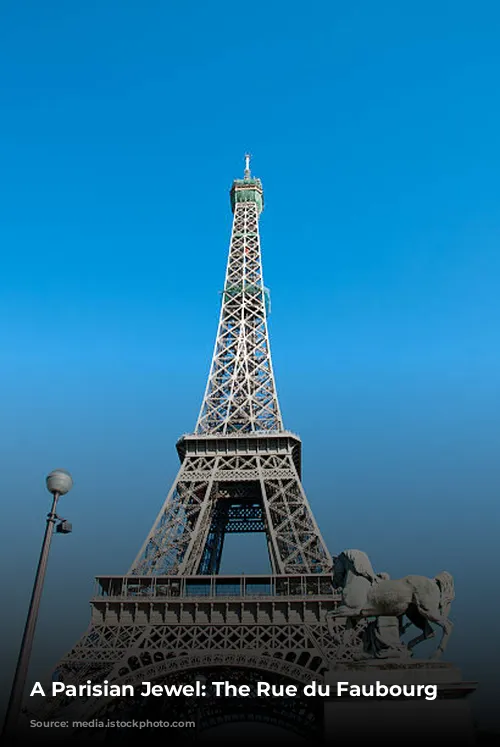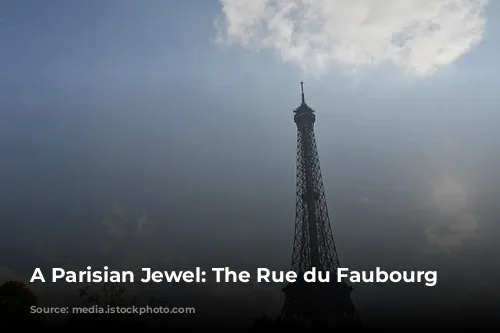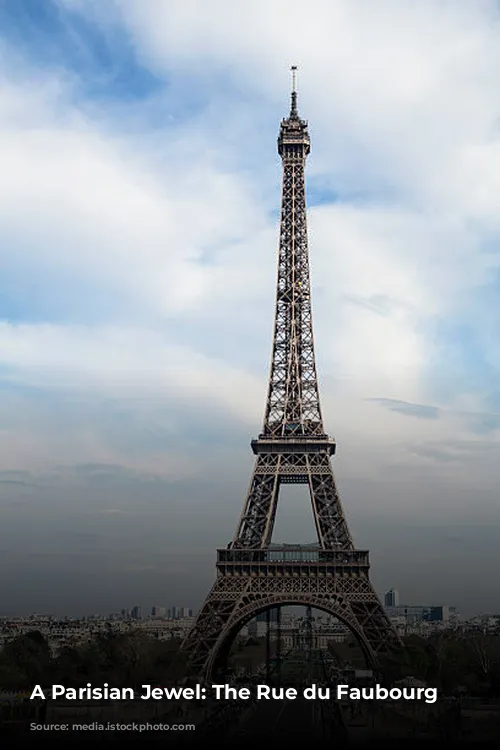Imagine strolling down a street lined with iconic fashion houses, grand embassies, and historic palaces – you’ve stepped into the Rue du Faubourg Saint-Honoré! This Parisian gem, located in the chic 8th arrondissement, is more than just a street; it’s a symbol of luxury, fashion, and international diplomacy.
From humble beginnings to Parisian prominence, the Rue du Faubourg Saint-Honoré has evolved over centuries. Its roots lie in the village of Roule, which existed outside the medieval walls of Paris. As the city grew, the dirt road leading to Roule became a crucial thoroughfare, connecting the bustling Les Halles market with the surrounding countryside. This road, later named Rue Neuve-Saint-Honoré, was lined with grand mansions and marked the gateway to Paris.
In the 18th century, the village was absorbed into the city, and the street was renamed Rue du Faubourg Saint-Honoré, meaning “street outside the city of Saint Honoré.” The Forêt de Rouvray, a vast oak forest that once stretched westward, was eventually replaced by the iconic Bois de Boulogne, a sprawling park.
Today, the Rue du Faubourg Saint-Honoré is a vibrant hub of fashion, luxury, and diplomatic activity. It’s home to some of the world’s most prestigious brands, including Chanel, Dior, Hermès, and Lanvin. International embassies stand tall, including the Élysée Palace, the official residence of the French President, as well as the residences of the United States, Canadian, and British Ambassadors.
Let’s take a closer look at some of the street’s most notable addresses:
- No. 14: The atelier and boutique of couturier Dominique Sirop, a haven for fashion enthusiasts.
- No. 19: The historic perfumery Jean-François Houbigant, established in 1775, still welcomes visitors with its enchanting scents.
- No. 22: The flagship store of Lanvin, a testament to the enduring legacy of Jeanne Lanvin, a pioneer of haute couture.
- No. 24: The iconic flagship store of Hermès, showcasing their exquisite leather goods and luxury accessories, with the headquarters of the Hermès Group residing here.
- No. 29: The esteemed Lancôme, a leading cosmetics brand, has its institute and headquarters on this prestigious street.
- No. 31: The Hôtel Pillet-Will, a majestic building, serves as the residence of the Japanese Ambassador to France.
- No. 33 & 35: The Hôtel Perrinet de Jars and its neighboring building, dating back to 1713, are now home to the Cercle de l’Union interalliée, a prestigious club.
- No. 35: The Embassy of the United Kingdom, a symbol of Anglo-French relations, stands as a testament to the enduring bond between the two nations.
- No. 39: The Hôtel de Charost, an elegant mansion, serves as the official residence of the British Ambassador to France.
- No. 41: The Hôtel de Pontalba, a magnificent building designed by Louis Visconti, is the official residence of the United States Ambassador to France.
- No. 55: The Élysée Palace, a symbol of French power and history, has witnessed significant events, including the abdication of Napoleon.
- No. 56: The prestigious French edition of Vogue magazine, located in the Publications Condé Nast Building, continues to shape the world of fashion.
- No. 76: Galerie Charpentier, a renowned art gallery, now houses Sotheby’s France, a leading auction house.
- No. 96: The Ministry of the Interior, housed on Place Beauvau, plays a vital role in French government.
- No. 101: Dalloyau, a renowned gastronomic brand, operates its flagship shop and tea room on this esteemed street.
- No. 130: The Embassy of Canada and the Canadian Cultural Centre, representing Canada’s diplomatic presence in France.
- No. 135: The residence of the Canadian Ambassador to France, a grand building known as the Hôtel de Rigny or the Hôtel de Fels, is a testament to the strong relationship between Canada and France.
- No. 222: The Convent of the Dominicans, a historic religious site, is a reminder of the street’s rich past.
- No. 252: The Salle Pleyel, a renowned concert hall named after the renowned composer and piano manufacturer, Ignace Pleyel, continues to echo with the melodies of music.
The Rue du Faubourg Saint-Honoré, easily accessible via metro lines 2, 8, 9, 12, and 14, is not merely a street; it’s a journey through time and a celebration of Parisian elegance, fashion, and diplomacy.



